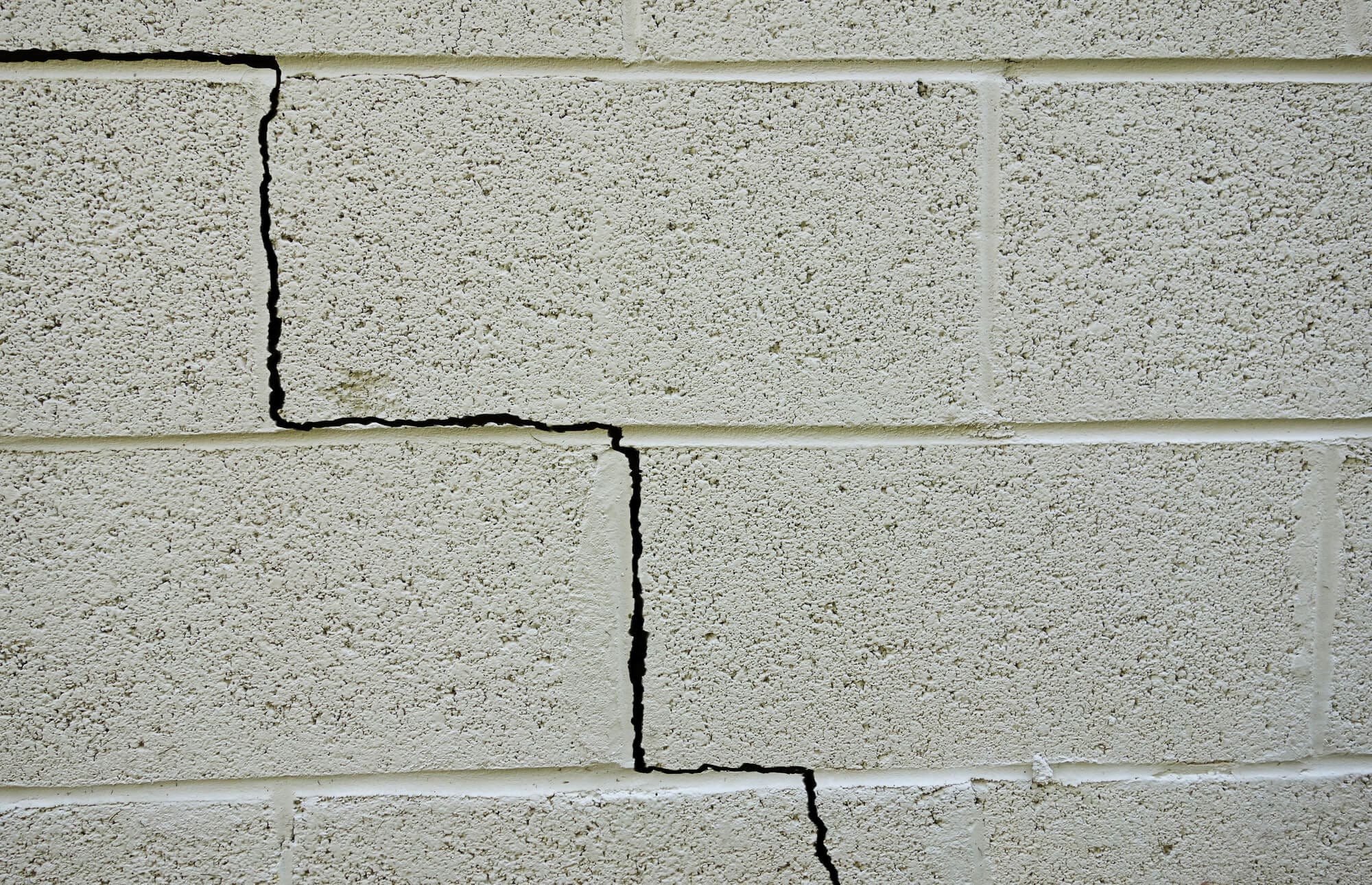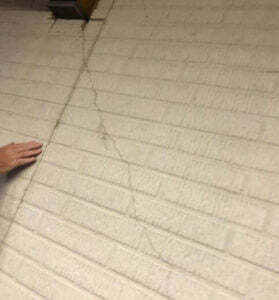Foundation Settling vs. Foundation Problems

Originally posted on 12/4/18; revised by Kelly Kater on 7/9/20
We’ve all heard it- or said it- before, “it’s just the house settling.” What does that really mean? When I say it, I’m shrugging off small creaks in my floor- hardwood flooring shifts slightly when the humidity level changes. Most of us probably mean something similar; we equate “settling” with minor shifts of our home. These shifts occur as the soil under the house adjusts to accommodate the building’s weight and the ever-changing weather conditions.
But in truth, a settling foundation IS a foundation problem- when it moves too much. This is where experience and education become essential.
Acculevel has been repairing home foundations since their beginning in 1996, and they’ve restored stability and health to thousands of homes. In this article, we’re going to explain why a house settles, what signs indicate your home is developing foundation problems, and how to distinguish “normal” settling from “problematic” settling.
 This photo was taken by an Acculevel project manager during a free estimate appointment. This hairline crack is beginning to widen, and is a sign of a foundation problem.
This photo was taken by an Acculevel project manager during a free estimate appointment. This hairline crack is beginning to widen, and is a sign of a foundation problem.
Why Does a House Settle?
When you walk on a beach, the sand compacts and shifts under your weight. The soil under your house is doing the same thing, just much more gradually. It starts when your home is built. Before the foundation was poured, the builder dug down to undisturbed soil at the construction site. If the builder does it well, the “settling” that happens will be the type we discussed in the beginning: small, gradual adjustments over a long period of time.
After the home is built, numerous factors affect the overall settling process. Temperature changes, humidity and moisture levels, the type of concrete used, the local water table… all of these have some impact. Generally speaking, the initial settling of a home occurs over the first three years.
After those three years have passed, settling should be minimal and in very small increments. In the Midwest, you will find occasional hairline cracks that are caused by the freeze and thaw cycle of the seasons. They should be repaired by a professional to make sure they don’t become something more serious, but they are “normal.”
But if the settling is more sudden, more significant, or includes any sort of water intrusion? That is when you likely have a foundation problem.
How Do I Know When I Have a Foundation Problem?
We have created a DIY Foundation Checklist that we recommend all homeowners use at least once (preferably twice) per year. This will walk you through an inspection step-by-step, and explain what you are looking for and why. But if you have already found signs of trouble, here’s a short list of what to watch for:
- If the cracks are larger than hairline, or in multiple places. Not sure? We have an article specifically about crack assessment.
- Are the cracks inside your house AND outside it? Drywall cracks above window or door frames are a sign of settling, especially when combined with cracks in the exterior of your foundation. If you do see cracks around doors and windows, test to see if they open and close smoothly. A settling foundation can make the sills and frames uneven.
- Do you have water seeping into your basement or crawl space? When too much water accumulates around the foundation, it creates hydrostatic pressure. Water intruding is a sign that your foundation is under stress. It will also feed mold, which is a health risk for you and your family.
- Horizontal cracks, stair step cracks, or bowing in the walls. These are indicators that hydrostatic pressure is actively weakening your foundation in that area.
 This photo was taken by an Acculevel project manager during a free estimate appointment. Both horizontal and stair step cracks indicate the wall is beginning to bow inward.
This photo was taken by an Acculevel project manager during a free estimate appointment. Both horizontal and stair step cracks indicate the wall is beginning to bow inward.
To Repair or Not to Repair, This is a Trick Question
When it comes to your foundation, the answer is always,“Yes, repair it.” Your foundation holds up your entire house. The safety and health of the building starts with a stable base. Making repairs before they become serious concerns will save you money, minimize stress and spare you the aggravation of a major excavation or installation.
Do You Have Signs of Foundation Problems?
If you have concerns about symptoms in your home, please find a good reputable contractor to help you assess the situation. You should verify that they are experienced, licensed and accredited by the Better Business Bureau.
Before you meet with a foundation repair company, I suggest you review our post on the questions you should ask a contractor. This comes with a free downloadable guide that you can use to further evaluate the service provider, to determine if they are the right fit for you.
If you live in our service area, contact Acculevel. We provide free estimates and proudly stand by our work; most of our foundation repair methods come with a warranty for the life of your structure.